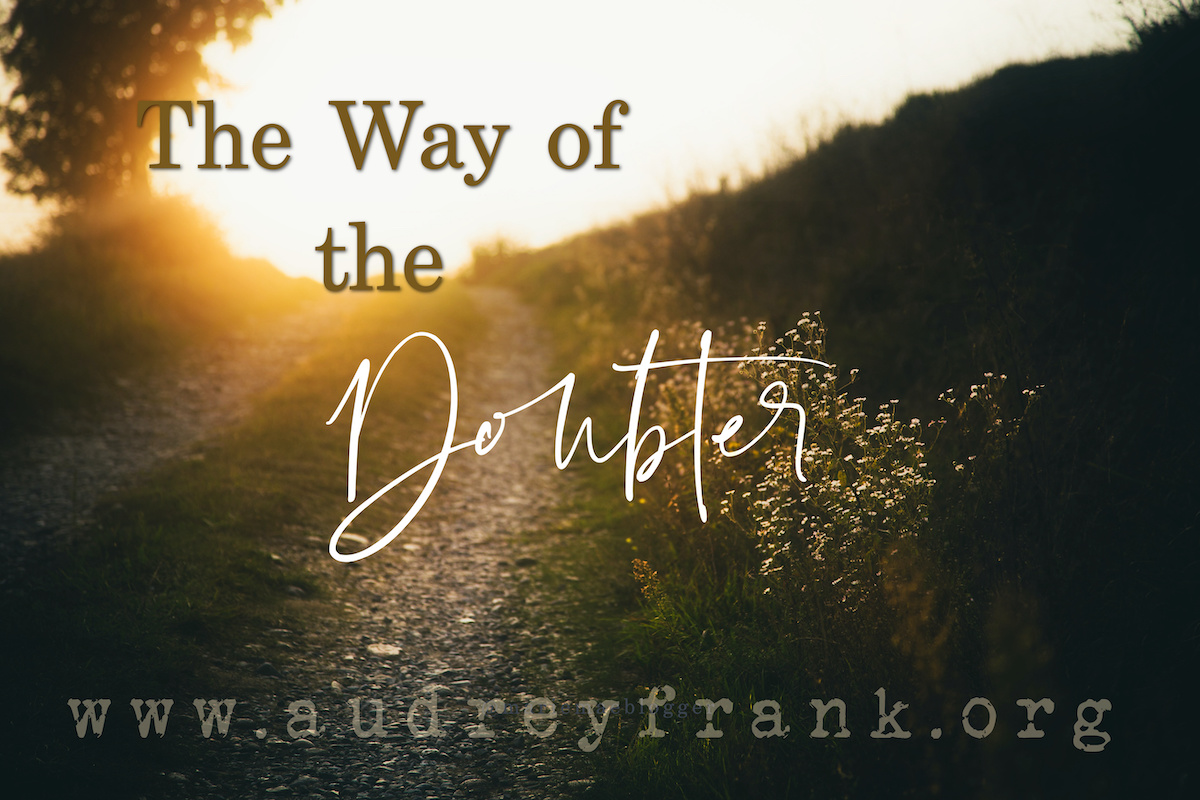The Way of the Doubter

In the region of Abruzzo, Italy, amidst rolling hills of vineyards and olive groves, is a fountain. It flows with new red wine and is free to anyone who finds it.
The fountain intentionally sits hidden along what is known as Il Cammino di San Tomasso, or, The Path of Saint Thomas. Pilgrims may stop for a drink on their way to the Basilica of Saint Thomas the Apostle, a beautiful twelfth-century church sitting beside the sea in the quiet town of Ortona. In 1258, a captain brought the remains of Thomas the apostle of Jesus there to be venerated and protected deep within its walls.
Thomas is famously remembered as the Doubter.
Honest pilgrims will admit The Way of the Doubter is a well-worn path. And along its winding way can be heard the cries of those broken by trauma and disappointment.
Thomas knew both. He had witnessed the brutal death of his beloved Savior and friend. His heart was broken. He was a realist, and grief only made it worse. Injustice and loss demanded he face the truth: those we love die. Bad things happen to good people. Dreams are disappointed.
Unless I see the wounds from the nails in his hands, and put my finger into the wounds from the nails, and put my hand into his side, I will never believe it! John 20:25
I don’t blame Thomas for needing proof of the miracle everyone was talking about. Pain makes us needy. Loss makes us weary. Belief is blown up and to hope again might hurt. When you are already a walking wound, who wants to risk more pain?
Even the wisest poet ever known, King Solomon, understood the power of hope to wound.
Many a pilgrim on the Way of the Doubter hides a heart sickened by deferred hope. How can one find the courage to #hope again? #doubt #faith #healing Click To TweetHope deferred makes the heart sick. Proverbs 13:12
I notice several things about Thomas. One, he did not cut off his community. Or maybe, his community did not cut him off. They had faced loss together, and this can be bumpy. We may experience the same traumatic event but each experience it differently. Although we are mutually struggling, we need each other. Sometimes we’d rather withdraw into our own separate existences, hidden and hurting alone.
It is easy to withdraw from community when we are in pain.
Thomas’ community knew they needed each other. Because Thomas remained connected, he was in a place to hear hope.
The other disciples told him, “We have seen the Lord!” John 20:25
Another thing I notice about Thomas is that he was honest. No spiritual platitudes from this guy. Straightforward and blunt, he made it clear where his belief (or unbelief, rather) stood. I see no evidence of shame in his disbelief, just detailed, specific honesty.
When we are honest we invite Jesus into our pain.
Thomas did not know it when he expressed his doubt, but Jesus had plans to meet him in his place of unbelief.
Are you or someone you know in the raw, ugly place of unbelief? Tell someone. Listen to someone. Allow honest conversation. Jesus is not shocked by the ugly truth. And it can’t stop His chasing love.
Eight days later, behind locked doors, Jesus came to the disciples again. This time, Thomas was present.
Jesus’ love cannot be stopped by our locked doors.
Grief makes some hearts lock tight. But that can’t keep Hope from showing up. Jesus is our Hope, and He is not a feeling, a maybe, or an outcome. He is a Person, and He handles our wounded hearts with tenderness.
Eight days later the disciples were again together in the house, and Thomas was with them. Although the doors were locked, Jesus came and stood among them and said, “Peace be with you!” John 20:26
The next thing I notice in Thomas’ story is how personally and specifically Jesus’ addressed Thomas’ doubt.
Then he said to Thomas, “Put your finger here, and examine my hands. Extend your hand and put it into my side. Do not continue in your unbelief, but believe.” John 20:27
At every point of Thomas’ doubt, Jesus met him.
Thomas responded as one who had lost hope, then found it again.
Thomas replied to him, “My Lord and my God!” John 20:28
There is no shame in Thomas’ answer to Jesus’ correction. When Jesus corrects us, instead of shame, we experience freedom. Thomas’ words, once daggers of doubt, now reverberate with relief and joy.
The Way of the Doubter becomes The Way of the Believer.
And along the Way is a fountain, flowing red. Hidden from view, it is only found by pilgrims willing to believe. The new wine is free for all who find it, all who are willing to walk honestly on the path of doubt, to take the risk of hope that declares, My Lord and My God, You are here with me!
Lord, help me risk hoping again, for You are here with me on the journey! Amen.
If you are a doubter who longs for belief, continue your journey by listening to this song: There is a Fountain

No Comments